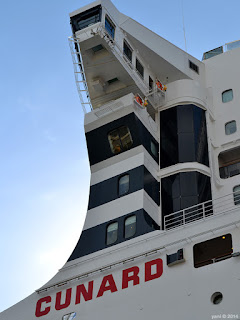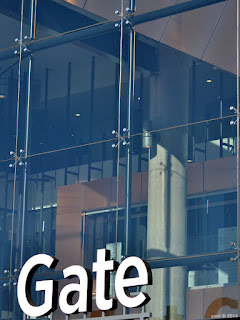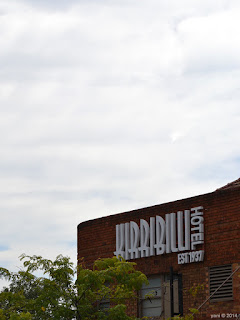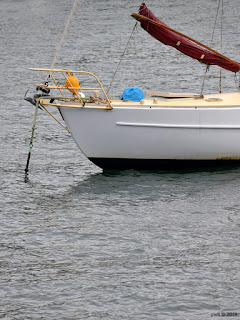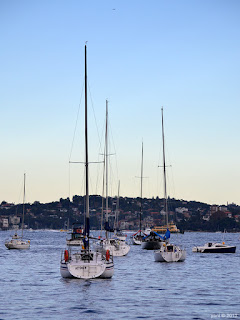Murder on the Orient Express doesn't really answer either of those questions, as far as I'm concerned.
Let's start with a somewhat obvious admission... I LOVE the 1974 version of Murder on the Orient Express with a passion. It's full of (at the time) big name actors, it has one of the best Poirots, Albert Finney, and while the end is a little tone deaf when set against the rest of the movie, Sidney Lumet gives a masterclass on how to put a bunch of people in a confined space, stay within that space and make it interesting. It keeps a ticking clock firmly in the background and the finale has the kind of denouement that I expect from a Poirot story, with everyone gathered around to hear Hercule let them all know exactly how clever he is.
The 2017 version? Well... it's pretty.
No, in all seriousness, it's a beautiful looking movie, with both cinematographer Haris Zambarloukos and the set and production design (with the possible exception of a hideously blatent product placement for Godiva Chocolate... who unsurprisingly have a whole selection of "Murder on the Orient Express" chocolates on their website) pulling out all the stops, this movie is a delight to look at. There are beautiful uses of glass reflection and refraction in several scenes and the way the camera moves through spaces is gorgeous.
However the whole thing is very clearly 90% computer generated. At least anything outside of the train. That's one of the things about the original, they give you an establishing shot to show where the train is and then you're inside the train and you don't even notice that you can't really see very much outside the windows. Mostly because you're paying attention to the people and the story.
This time it all has that same slightly stilted and hollow feeling that CGI backgrounds still provide.
And in this movie Hercule Poirot can't seem to sit in one place for more than 30 seconds at a time. There are several things that Poirot would not, under any circumstances, do. These include:
- climbing on top of a train
- engaging in a chase scene
- hand to hand combat
- leaving a perfectly warm and pleasant train to question a suspect in the snow
- revealing to people that he knows things before it's advantageous to do so.
Branagh does have the fabulous moustache though. Even if I'm pretty sure you can see the lace front in a couple of shots.
As far as the rest of the cast, firstly it's a much larger overall cast from the original (that may be because these days you have to acknowledge even the people who show up on screen for half a second, whereas you didn't back in the day), but they've still decided to combine one of the less active characters with one of the mains in a way that's slightly strange. They've also messed around with names, ages, backstories and the like... none of which is a major drama, and some of which was required by the casting of certain actors in certain roles, so overall I'm not really bothered by it.
However they do skim over or simplify certain elements of plot (or rearrange them in a much less interesting way) in order to, as previously stated, include a stupid partial chase scene and a moment or two of combat, as well as shoehorn in some Poirot backstory about a woman.
And they still come in about 15 minutes shorter than the 1974 version.
As far as the 2017 cast is concerned, it feels much less balanced between all the characters, possibly because not everyone's interrogation seems to be given the same weight and importance. However Johnny Depp, Michelle Pfeiffer, Daisy Ridley and Judi Dench all put in good performances, although with possibly only Depp surpassing his 1974 equivalent... he manages to make Ratchett quite unlikable. Pfeiffer comes close a couple of times and has a nice little sequence at the end that her counterpart never had which certainly helps.
A number of the others seem to fade into the background more or less, and oddly both the Count and Countess are essentially missing from the whole movie with the exception of a couple of scenes. I mean, within the logic of the movie it makes sense, and I'm not sure they show up all that much more in the original, but they just seem totally absent (and forgettable when they do show up). It was also disappointing that while they made better explanations for certain characters motivations, the rest of the character was so completely overlooked that it didn't even matter (I'm thinking specifically of Penélope Cruz in this instance, but the same could be said for Derek Jacobi).
One of the things that irked me more than anything was Poirot giving away what he knew randomly while talking to people... it makes no sense both from a story perspective and a character one. Maybe both the writer, Michael Green, and Branagh wanted to keep the audience in the loop... but that's not what I want out of a Poirot story... I want the big reveal at the end. And that was there, if a little joyless at times, but some of it's power had been lost along the way. Which also wasn't helped by the fact that they skimmed right across certain clues and moments (the grease stain, the divorce, amongst others). If they'd spent more time on the actual plot and less on ridiculousness like climbing on trains and chasing people, they probably would have had time for that.
Likewise, I understand the desire to show who Poirot is at the beginning of the film, because not everyone is going to know exactly who he is, but it just felt... tacked on. And it just pads out the run time, meaning they have less time to spend on actual plot, character and motive.
Thinking about it, I think the problem may be that the movie doesn't feel smart. It certainly wants to think it is... but it's not sharing that with the rest of us. The characters spend too much time giving each other knowing looks which just telegraph things far too much.
All I can really say is if you want to see a great version of Murder on the Orient Express, get your hands on the 1974 version.
yani's rating: 2 moustaches out of 5















